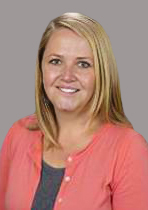Scoliosis: How curvature of the spine can affect your health

People of all ages can develop this condition.
Does the word “scoliosis” make you think of a young person in a back brace? You might be surprised to know adults can develop this curvy spine condition as well.
What should you know about scoliosis?
About scoliosis
Scoliosis is a condition where the backbone grows sideways by 10 degrees or more. Your spine is naturally curvy, but those curves are typically oriented from front to back rather than side to side.
Experts estimate that about 7 million Americans (2% to 3% of the population) have scoliosis. There are two major types:
- Idiopathic: This is the kind of scoliosis for which there is no known cause. Most patients (>80%) with idiopathic scoliosis are diagnosed at age 10 years or older. This is adolescent idiopathic scoliosis (AIS). It’s the most common type. It often runs in the family. Research has found some connections to hormones that affect bone development.
- Degenerative: This form develops in adulthood. It’s often due to wear and tear. It may also develop after an injury that affects your back. Or it can be due to having undiagnosed scoliosis from childhood. Studies show that the chances of developing scoliosis goes up as you age.
Both types of scoliosis can range from mild to severe, based on the degree to which the spine is curved. The back may be shaped like an S or a C.
There’s nothing you can do to prevent scoliosis. That’s why it’s important to be aware of the condition so you can get treatment, if needed. Getting treatment can prevent further concerns.
Symptoms and diagnosis of scoliosis
Scoliosis can be subtle. The condition can develop little by little and often with no symptoms. The curve might not be readily noticeable.
“This is one reason regular well-child and well-teen checks are so important,” says Miranda Lanning, MD, a pediatrician at PeaceHealth in Springfield, Oregon.
“We do not check for scoliosis at sick visits. Scoliosis usually starts after age 10 and progresses fastest when adolescents are growing tall quickly. A regular well-child check includes a thorough head to toe exam.”
Exams are used to look for crookedness of the backbone and unevenness of the ribs, shoulders or shoulder blades. Your provider will determine if your child needs X rays, further measurements or referrals.
Adults with scoliosis might notice symptoms like:
- Back pain.
- Tingling or numbness in the legs.
- Breathing problems.
- Tiredness or fatigue.
- One leg that appears shorter than the other leg.
- The hip thrusts forward on one side.
- Sway back (neck and/or lower back curves forward).
Risks of untreated scoliosis
Untreated scoliosis can lead to or worsen some health concerns such as:
- Back pain.
- Muscle and ligament weakness.
- Arthritis in the spine.
- Hip pain.
- Difficulty moving because of poor posture.
- Breathing and lung problems because the chest is squashed.
- Constant tiredness or fatigue.
While rare, it can also contribute to heart valve conditions.
Treating scoliosis
The type of treatment for scoliosis will depend on a few things:
- Physical development or stage of growth – is your child starting or past puberty?
- Severity of the curve – is it greater than 10 to 20%?
- Progression – is the curve continuing to get worse?
- Severity of symptoms – are your symptoms affecting your daily life?
- Other conditions – is it causing another aspect of your health to get worse?
If your child has just barely started puberty and the curve is 10 degrees, the doctor will want to follow the development closely. “If we catch the curve early, monitor it closely and brace the back at the right time, it is possible to avoid spinal surgery,” says Dr. Lanning.
If you’re past puberty and the curve in your spine is 10 degrees, you likely won’t need intervention.
Treatment for mild scoliosis often focuses on managing symptoms such as over-the-counter medication for pain relief.
Physical therapy can help ease symptoms and make other treatments more effective. Strengthening muscles can support your joints and lessen fatigue.
And staying flexible can help you with deep breathing.
Living with scoliosis
If you have scoliosis, you have it for life. But it doesn’t have to limit you. No matter how old you are, there are several strategies for living well with scoliosis.
As noted above, treatment isn’t always necessary. And there are everyday things you can do to manage life with scoliosis.
Practice self-care habits such as regular exercise and a quality diet. Both can reduce inflammation and pain. They can also help keep your weight at a healthy level, which makes it easier to move.
The following can also help:
- Be mindful about the activities you choose. You might need to avoid contact sports like wrestling, football or lacrosse, which can lead to damage. Instead, consider swimming or low-impact exercises. Talk to your doctor for recommendations specific to your situation.
- Be aware of posture. Avoid slouching. Ask your provider or physical therapist about exercises you can do to support your body’s alignment.
- Use proper body mechanics. Try not to twist or overreach — especially when lifting something heavy. It can strain your spine.
- Watch how much you carry. Go light when packing a bag or purse. The rule of thumb is to carry less than 10% of your body weight — that’s 15 pounds if you weigh 150 pounds. Your shoulders and back will thank you if you go even lighter.
Knowing the facts about scoliosis can help you take steps to protect your health and manage your symptoms.






